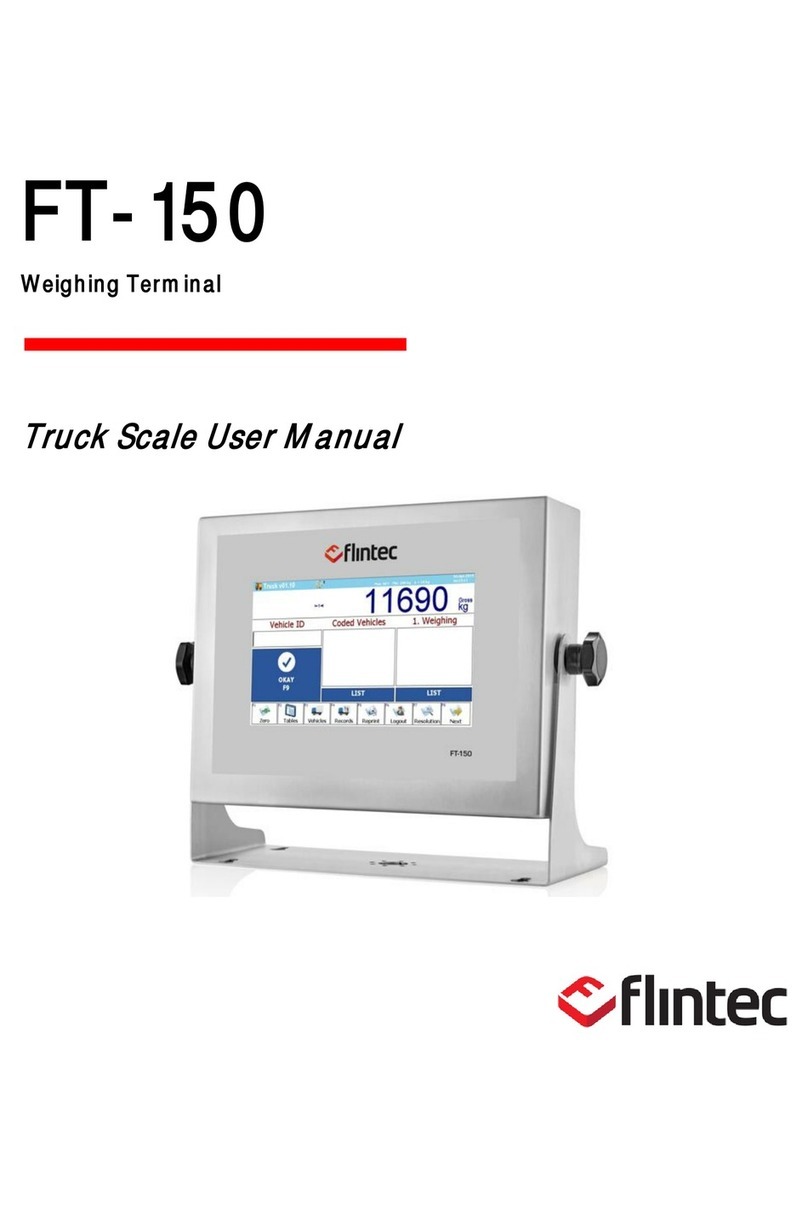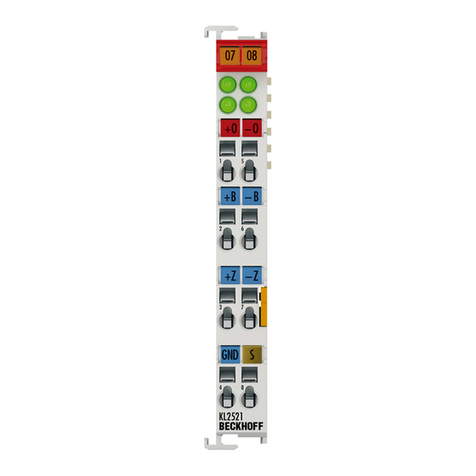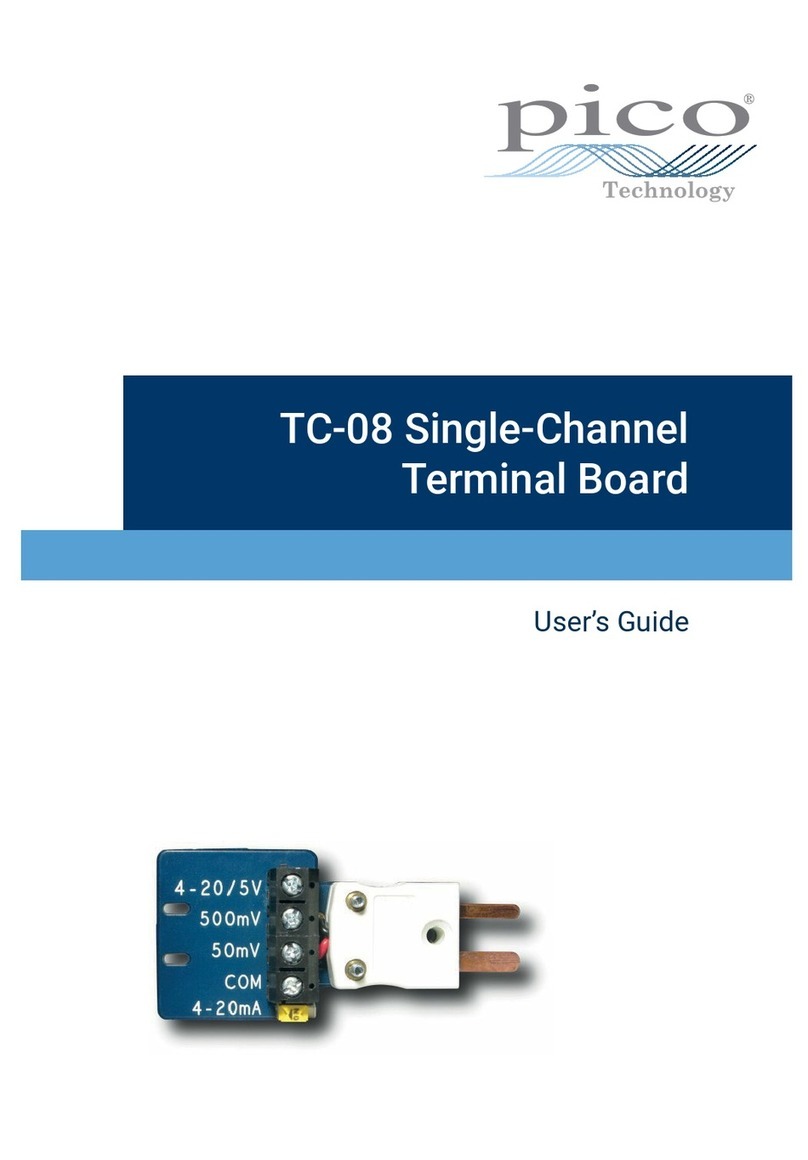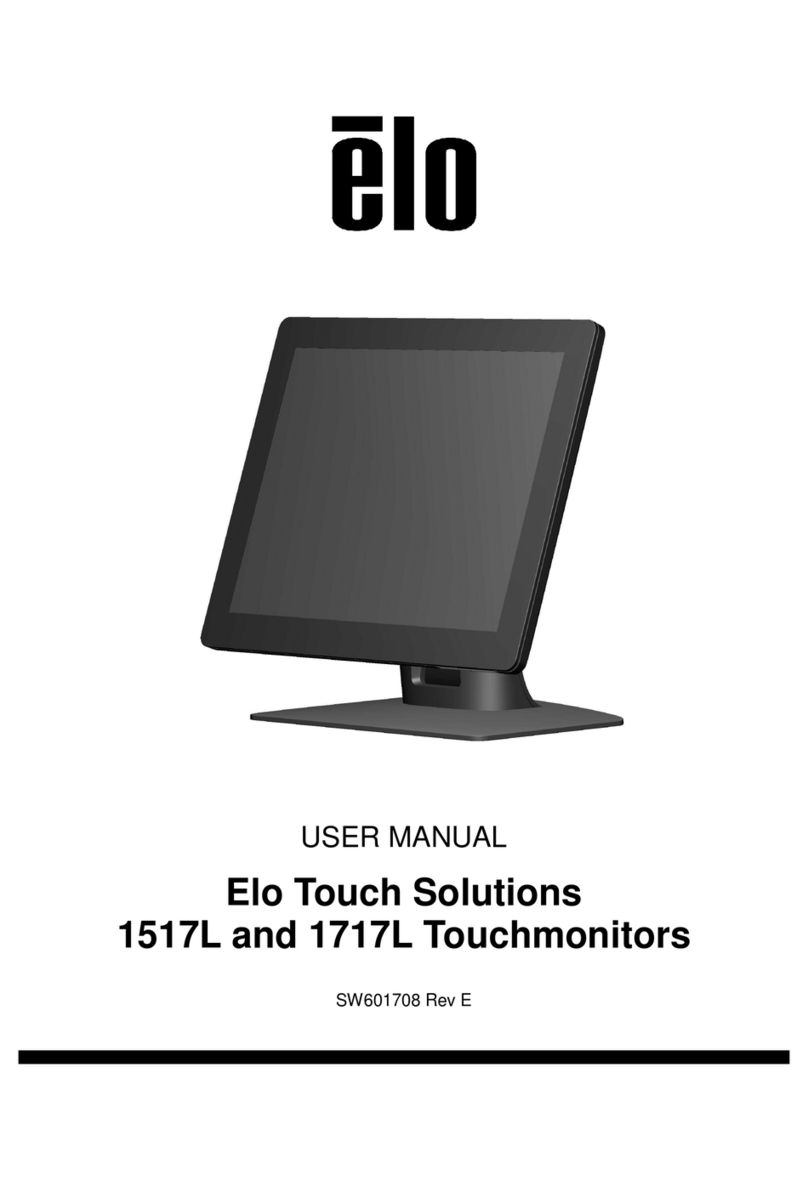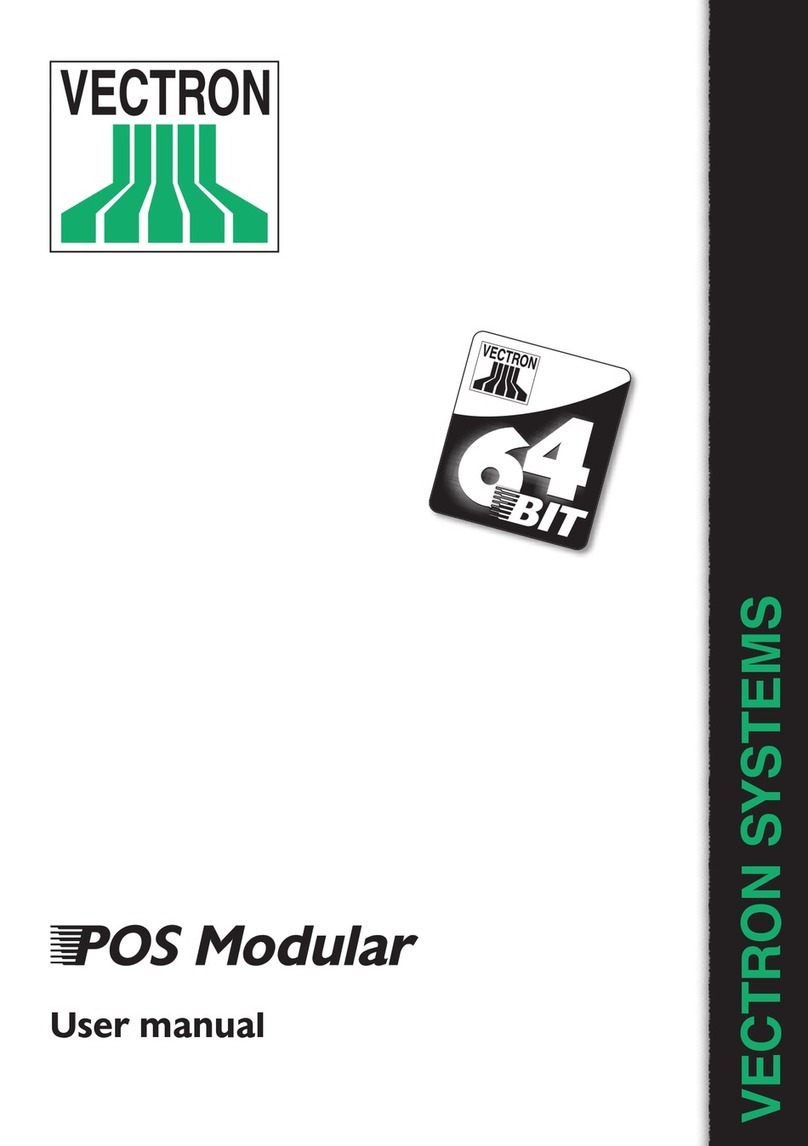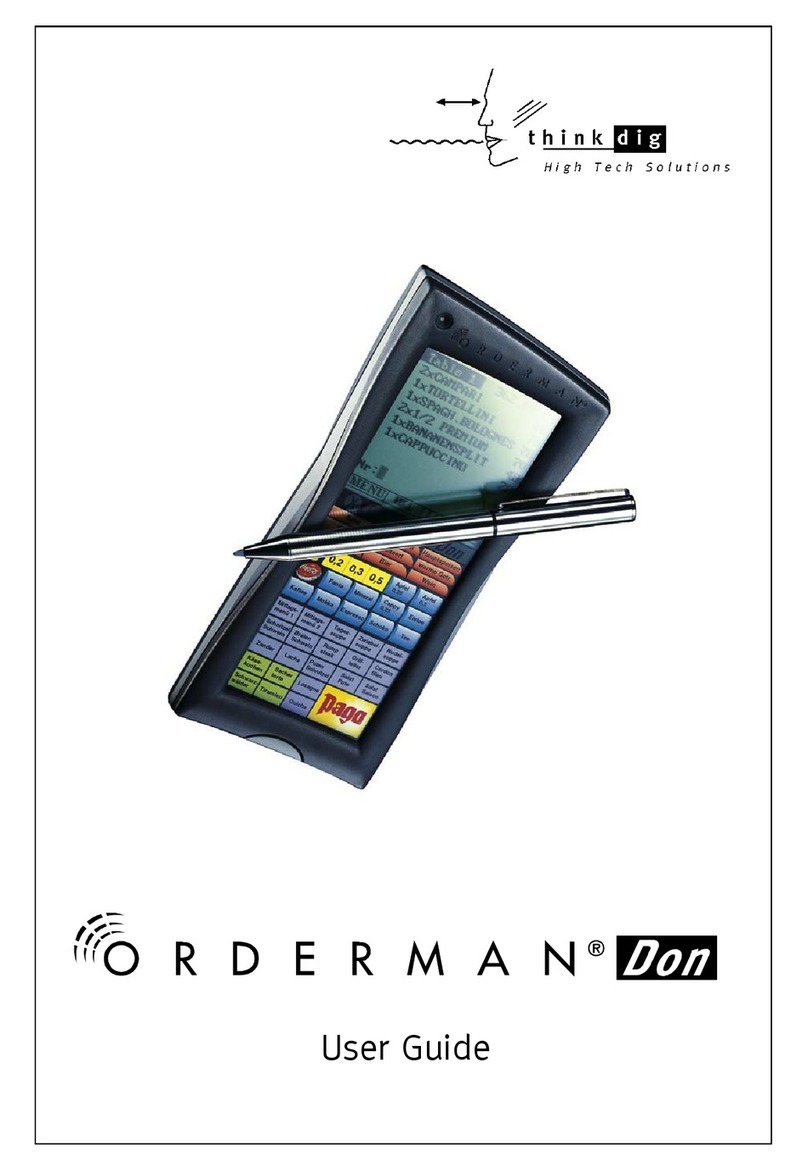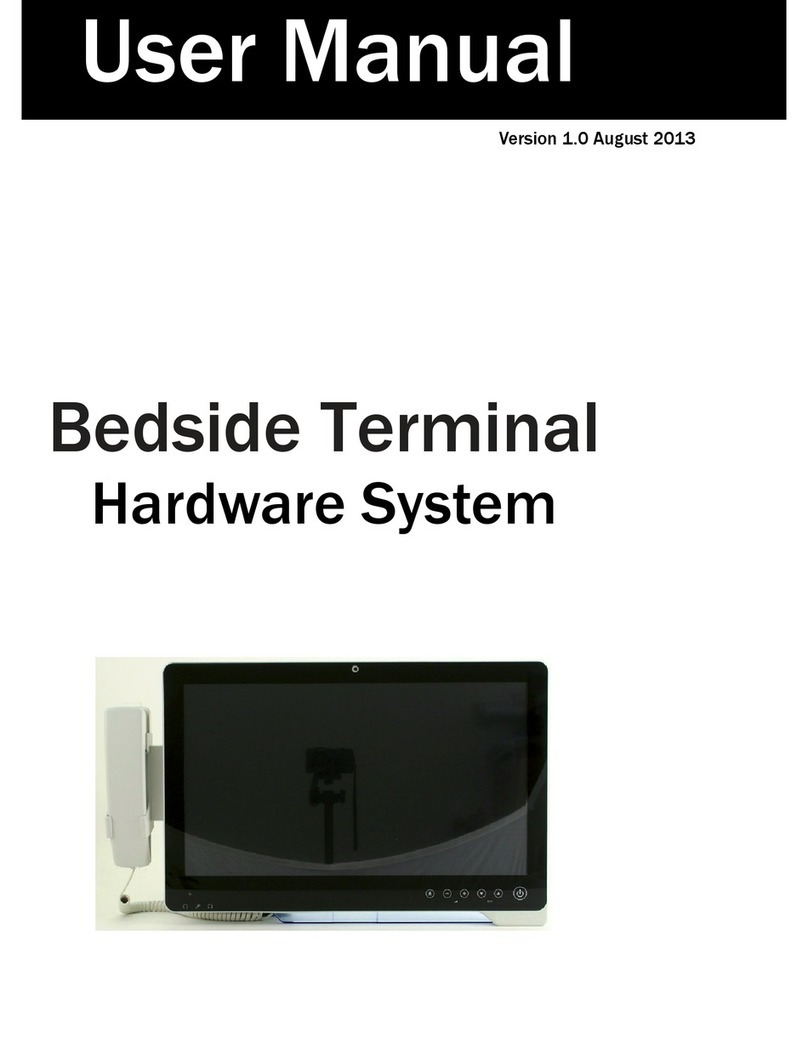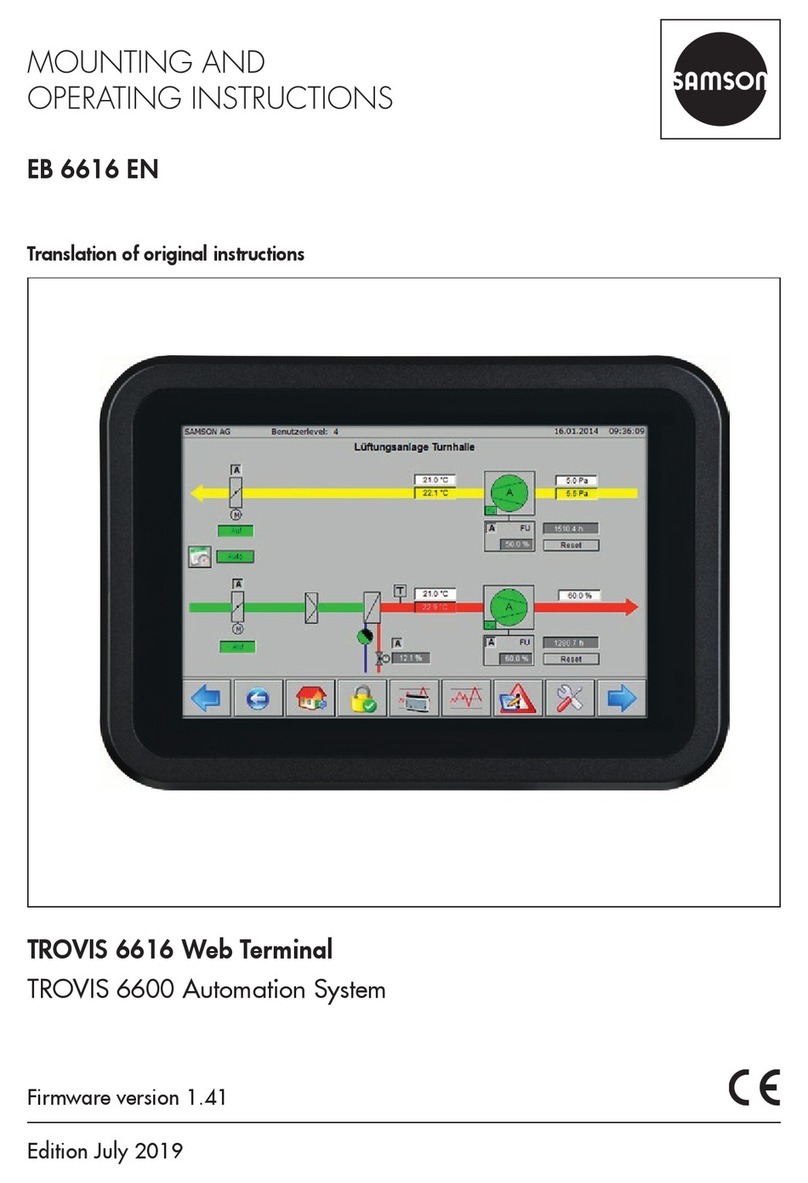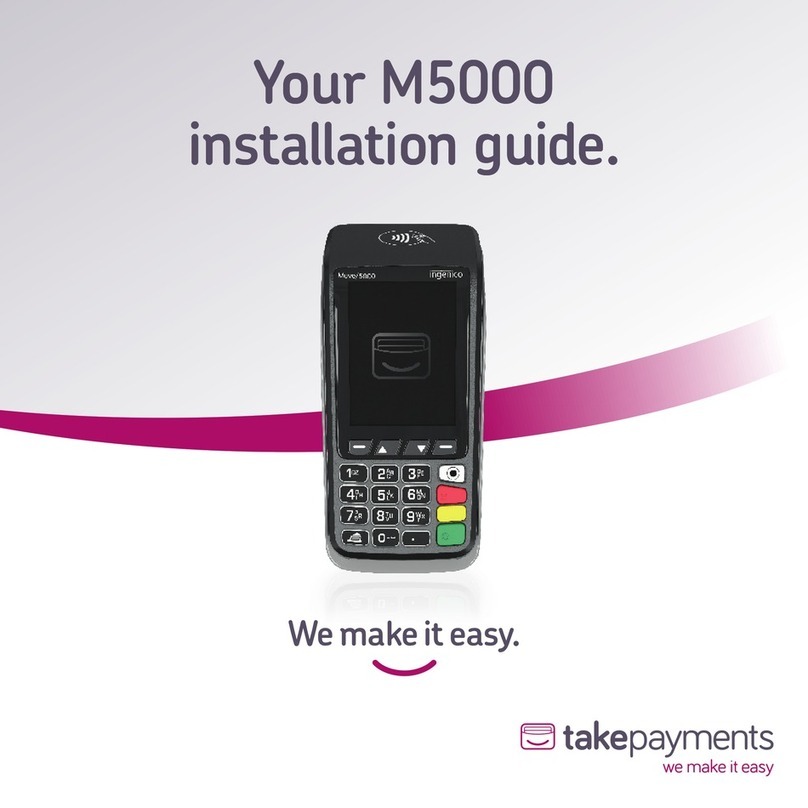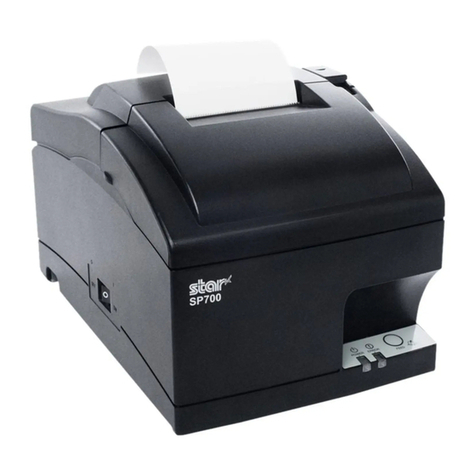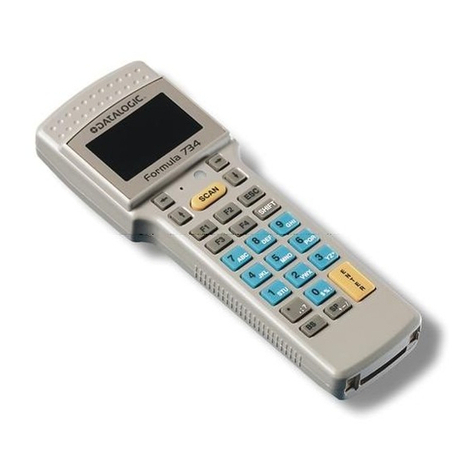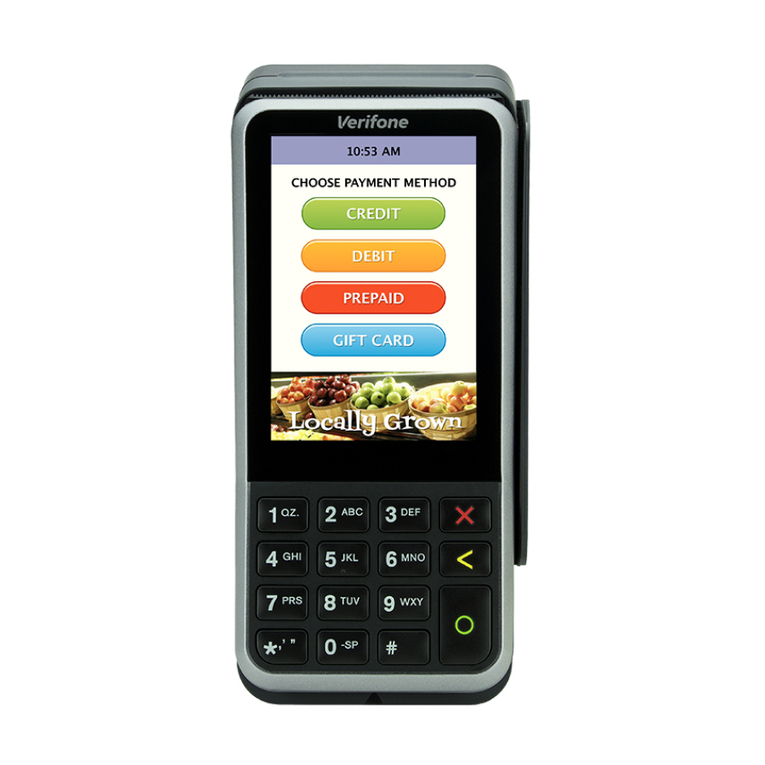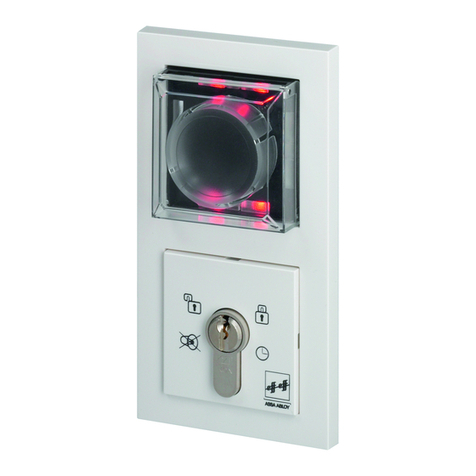Flintec FT-107 User manual

FT-107
Weighing Terminal
Technical Manual

FT-107 Weighing Terminal, Technical Manual, Rev. 1.0.0, August 2019 Page 2of 46
Table of Contents
1. Safety Instructions ..................................................................5
2. Declaration of Conformity .......................................................6
3. Introduction .............................................................................7
3.1 Overview.................................................................................................................7
3.2 Specifications..........................................................................................................7
3.3 The Front View and Key Functions.........................................................................8
3.3.1 Display....................................................................................................................8
3.3.2 Key Pad ..................................................................................................................9
3.4 Installation Parts....................................................................................................10
3.4.1 Parts included for FT-107......................................................................................10
3.4.2 Part included for FT-107S.....................................................................................10
4. Installation.............................................................................11
4.1 Recommendations................................................................................................11
4.1.1 Environment..........................................................................................................11
4.1.2 Cabling..................................................................................................................11
4.1.3 Cleaning................................................................................................................11
4.1.4 Disposal................................................................................................................11
4.2 Housing.................................................................................................................12
4.3 Mechanical Installation..........................................................................................12
4.4 Electrical Connection ............................................................................................13
4.4.1 Load Cell Connection............................................................................................14
4.4.2 RS 232C Serial Port..............................................................................................15
4.4.3 Optional RS232C Serial Port ................................................................................16
4.4.4 Power Source Connection and Grounding............................................................16
5. FT-107(S) Functions.............................................................17
5.1 Basic Functions.....................................................................................................17
5.2 Advanced Functions..............................................................................................19
5.2.1 PLU Memory Menu...............................................................................................19
5.2.2 ALU Memory Menu...............................................................................................19
5.2.3 CLU Memory Menu:..............................................................................................19
5.2.4 Manual APW entry:...............................................................................................20
5.2.5 Buzzer Menu.........................................................................................................20
5.2.6 Backlight Menu (only FT-107S) :...........................................................................21
5.2.7 Configuration Menu:..............................................................................................22
5.2.8 Serial Data Outputs:..............................................................................................25
5.2.9 Printer setting........................................................................................................27
5.2.10 Date and Time ......................................................................................................28
5.3 Unit Change..........................................................................................................29
6. Application Weighing ............................................................29
6.1 Piece Counting......................................................................................................29
6.2 Checkweighing (+/-)..............................................................................................32
6.3 Animal Weighing...................................................................................................34
6.4 Temporary Gross Weight Indication......................................................................34

FT-107 Weighing Terminal, Technical Manual, Rev. 1.0.0, August 2019 Page 3of 46
7. Programming and Calibration ...............................................35
7.1 Entering the Programming and Calibration...........................................................35
7.2 Exiting the Programming and Calibration..............................................................36
7.3 Fast Access to the Calibration ..............................................................................37
7.4 Programming and Parameters..............................................................................38
7.4.1 [ OIML: 0 ] OIML..................................................................................................38
7.4.2 [ InCr : 0 ] Increased Display Resolution............................................................38
7.4.3 [ ZrnG: 1 ] Zero Range........................................................................................38
7.4.4 [ PZer: 1 ] Power on Zero Range .......................................................................38
7.4.5 [ AZT : 1 ] Automatic Zero Tracking ....................................................................38
7.4.6 [ StbL: 0.5 ] Stability Delay...................................................................................39
7.4.7 [ Motd: 1 ] Motion Detection.................................................................................39
7.5 Calibration.............................................................................................................40
7.5.1 [ CALıB ] Scale Parameters .................................................................................40
7.5.2 [ CAL ] Calibration..............................................................................................41
7.5.3 [ LınCAL ] Linearity Correction .............................................................................41
7.5.4 Zero and Span Adjustment ...................................................................................41
7.5.5 [ GrAvit ] Gravity Adjustment................................................................................42
8. Serial Data Formats..............................................................43
9. Sealing of Approved Scale....................................................44
10. Trouble Shooting...................................................................45

FT-107 Weighing Terminal, Technical Manual, Rev. 1.0.0, August 2019 Page 4of 46
RIGHTS AND LIABILITIES
All rights reserved.
No part of this publication may be reproduced, stored in a retrieval system, or transmitted in any form or
by any means, mechanical, photocopying, recording, or otherwise, without the prior written permission of
FLINTEC GMBH.
No patent liability is assumed with respect to the use of the information contained herein. While every
precaution has been taken in the preparation of this book, FLINTEC GMBH assumes no responsibility for
errors or omissions. Neither is any liability assumed for damages resulting from the use of the
information contained herein.
The information herein is believed to be both accurate and reliable. FLINTEC GMBH, however, would be
obliged to be informed if any errors occur. FLINTEC GMBH cannot accept any liability for direct or
indirect damages resulting from the use of this manual.
FLINTEC GMBH reserves the right to revise this manual and alter its content without notification at any
time.
Neither FLINTEC GMBH nor its affiliates shall be liable to the purchaser of this product or third parties for
damages, losses, costs, or expenses incurred by purchaser or third parties as a result of: accident,
misuse, or abuse of this product or unauthorized modifications, repairs, or alterations to this product, or
failure to strictly comply with FLINTEC GMBH operating and maintenance instructions.
FLINTEC GMBH shall not be liable against any damages or problems arising from the use of any options
or any consumable products other than those designated as Original FLINTEC GMBH Products.
NOTICE: The contents of this manual are subject to change without notice.
Copyright © 2016 by FLINTEC GmbH, 74909 Meckesheim, Bemannsbruch 9, Germany

FT-107 Weighing Terminal, Technical Manual, Rev. 1.0.0, August 2019 Page 5of 46
1. SAFETY INSTRUCTIONS
CAUTION! READ THIS MANUAL BEFORE OPERATING OR SERVICING THIS
EQUIPMENT. FOLLOW THESE INSTRUCTIONS CAREFULLY. SAVE THIS MANUAL
FOR FUTURE REFERENCE. DO NOT ALLOW UNTRAINED PERSONNEL TO
OPERATE, CLEAN, INSPECT, MAINTAIN, SERVICE, OR TAMPER WITH THIS
EQUIPMENT. ALWAYS DISCONNECT THIS EQUIPMENT FROM THE POWER
SOURCE BEFORE CLEANING OR PERFORMING MAINTENANCE. CALL FLINTEC
GMBH ENGINEERING FOR PARTS, INFORMATION, AND SERVICE.
WARNING! ONLY PERMIT QUALIFIED PERSONNEL TO SERVICE THIS EQUIPMENT.
EXERCISE CARE WHEN MAKING CHECKS, TESTS AND ADJUSTMENTS THAT MUST
BE MADE WITH POWER ON. FAILING TO OBSERVE THESE PRECAUTIONS CAN
RESULT IN BODILY HARM.
WARNING! FOR CONTINUED PROTECTION AGAINST SHOCK HAZARD CONNECT
TO PROPERLY GROUNDED OUTLET ONLY. DO NOT REMOVE THE GROUND
PRONG.
WARNING! DISCONNECT ALL POWER TO THIS UNIT BEFORE REMOVING ANY
CONNECTION, OPENING THE ENCLOSURE OR SERVICING.
WARNING! BEFORE CONNECTING/DISCONNECTING ANY INTERNAL ELECTRONIC
COMPONENTS OR INTERCONNECTING WIRING BETWEEN ELECTRONIC
EQUIPMENT ALWAYS REMOVE POWER AND WAIT AT LEAST THIRTY (30)
SECONDS BEFORE ANY CONNECTIONS OR DISCONNECTIONS ARE MADE.
FAILURE TO OBSERVE THESE PRECAUTIONS COULD RESULT IN DAMAGE TO OR
DESTRUCTION OF THE EQUIPMENT OR BODILY HARM.
CAUTION! OBSERVE PRECAUTIONS FOR HANDLING ELECTROSTATIC SENSITIVE
DEVICES.

FT-107 Weighing Terminal, Technical Manual, Rev. 1.0.0, August 2019 Page 6of 46
2. DECLARATION OF CONFORMITY
EU-Konformitätserklärung
EU-Declaration of Conformity
Monat/Jahr: month/year:
09/2019
Hersteller: Manufacturer:
Flintec GmbH
Anschrift: Address:
Bemannsbruch 9
D-74909 Meckesheim
Deutschland/Germany
Produktbezeichnung:Product name:
Nr. der Bauartzulassung:
No oft the EC type-examination certificate:
Nichtselbsttätige Waage (NSW)
Non-automatic Weighing Instrument (NAWI)
FT-107 / FT 107S Wägeterminal / Weighing
Terminal
No. 0200-NAWI-07137, FORCE Certification
Das bezeichnete Produkt stimmt mit folgenden Vorschriften der Europäischen Richtlinien überein:
This product confirms with the following regulations of the Directives of the European Community
Richtlinie 2014/35/EU Niederspannungs-Richtlinie
Richtlinie 2014/30/EU EMV
Richtlinie 2011/65/EU RoHS
Richtlinie 2014/31/EU Nichtselbsttätige Waagen
Directive 2014/35/EULow VoltageDirective
Directive 2014/30/EUElectromagneticcompatibility
Directive 2011/65/EURoHS
Directive 2014/31/EUNon-AutomaticWeighing
Die Absicherung aller produktspezifischen
Qualitätsmerkmale erfolgt auf Basis eines
zertifizierten Qualitätsmanagement-Systems nach
DIN ISO 9001.
All product-related features are assured by a quality
system in accordance with ISO 9001.
FolgendeNormenwerdenzumNachweisderÜbereinstimmungmitdenRichtlinieneingehalten:
Asaproofofconformitywiththedirectivesfollowingstandardsarefulfilled:
EN 60950-1:2008
EN 61326-1:2013
EN 50581:2012
EN 45501:2015
DieseErklärungbescheinigtdieÜbereinstimmung
mitdengenanntenRichtlinien,beinhaltetjedoch
keineZusicherungvonEigenschaften.
Thisdeclarationcertifiestheconformitywith thelisted
directives,butitisnopromiseofcharacteristics.

FT-107 Weighing Terminal, Technical Manual, Rev. 1.0.0, August 2019 Page 7of 46
3. INTRODUCTION
3.1 Overview
FT-107 weighing terminal is economic and powerful state-of-the-art indicator for industrial weighing
applications like basic weighing, piece counting, checkweighing or animal weighing.
FT-107 has the capacity for 100 records.
The scales equipped with FT-107 weighing terminal can be used in all kind of industrial areas up to wet and
hygienic environments with its fast and efficient cleaning build to the international guidelines.
3.2 Specifications
A/D Converter
A/D converter type
24-bit Delta-Sigma ratio metric with integral analog and digital filters
Input sensitivity
0.4 μV/d (approved); 0.1μV/d (non-approved)
Analog input range
0 mV to +18 mV (unipolar)
Resolution
Display resolution
up to 6.000 increment (approved);
up to 30.000 increment (industrial)
Internal resolution
up to 16.000.000
Scale Calibration and Functions
Calibration
Calibration is performed with or without load cell non-linearity correction.
Digital filter
3 steps programmable adaptive digital filter;
4 steps programmable filter at dynamic weighing.
Weighing functions
Taring, zeroing, auto zero tracking, motion detection, auto zero at power up,
increased resolution, unit change, temporary gross weight indication.
Application functions
Basic weighing, check weighing, piece counting, animal weighing, totalization.
Memories
100 product memory at check weighing,
100 product memory at piece counting.
100 product quantity memory at piece counting.
Load cells
Excitation
5 VDC max. 100 mA
Number of load cells
Up to 4 load cells 350 Ω or 12 load cells 1100 Ω in parallel
Connection
4- or 6-wire technique.
Cable length: maximum 2000 m/mm² for 6-wire connection
Communication
RS-232
1200 to 38400 baud rate, 8N1
Second RS-232
(optional)
1200 to 38400 baud rate, 8N1
Power Consumption
FT-107
12 VDC (with 100 – 240 VAC / 12 VDC adaptor)
FT-107S
12 VDC or 100 – 240 VAC, 50-60 Hz
Battery
2000mAh Li-ion, up to 36h continuous operation for single load cell /
24h for 4 x load cells
Environment and Enclosure
Operation
temperature
-15 °C to +55 °C; 85% RH max, non-condensing
Enclosure
FT-107
ABS plastic, IP30;
FT-107S
Stainless steel, IP65
Size
220 x 110 x 55

FT-107 Weighing Terminal, Technical Manual, Rev. 1.0.0, August 2019 Page 8of 46
3.3 The Front View and Key Functions
Figure 3.1 –Front view of FT-107(S)
3.3.1Display
The meanings of the announcement symbols on the display are:
Unstable: This sign appears if the load on the scale is not stable. The weight
value of the object should be read if the scale is stable. The taring, zeroing, printing
and accumulation are available when the scale is stable.
Center of zero: This sign appears if the weight is ±0.25e of the center of the zero.
(Page 17)
Weight unit: The weighing unit is located on the right of the weighting display
as kg, g, lb, and oz. (Page 29)
Net weight: This sign indicates that the weight indication is in net.
(Page 17)
Gross weight: This sign indicates the displayed weight value is gross.
Operation range: Announces the operation range of the multi range scale.
Piece counting mode: The value on the display indicated the quantity.
(Page 29)
Total: Signs the displayed value is the accumulation in the memory
(Page 18 in weighing and page 30 in piece counting)
APW: Announces the displayed value is the average piece weight.
(Page 31)
Gross / Net: Temporary gross indication. (Page 18)
Battery charging level: This sign indicates the battery charging level. Moving
level indicates the battery charging.
Battery is empty: Announces the battery is discharged and should be charged in
a first convenient time.

FT-107 Weighing Terminal, Technical Manual, Rev. 1.0.0, August 2019 Page 9of 46
3.3.2Key Pad
The keys and the key functions of FT-107(S) in usage are:
Power on/off key: Press button to turn it on. To turn it off, press the button for
one second.
* key: The most frequent used function key. Press to use the selected function.
(Page 23)
Sampling key: Press the * key more than one second to start sampling in
piece counting. (Page 29)
Escape key: In menu mode, press this key to escape from menu and return to
normal mode.
Tare key: Press this key to deduct the weight of the container placed on the
platform to see the net weight value of the added material in the container or
taken out material from the container. (Page 25)
Checkweighing key: To enter check weighing operation press this key until
[ H-L : n ] message appears. (Page 32)
Zero key: This key adjusts the scale zero, if there is any drift. Zeroing should
be done if there is no load on the platform. (Page 17)
F key: This key is used for its programmed function usage.
(Page 23)
ADV key: This key is used to enter advance functions setting by pressing more
than one second. (Page 19)
M+ Add to memory key: Press this key to add the indicated weight to the
accumulator in weighing and in counting operations.
(Page 18 in weighing and page 30 in piece counting)
MR Memory read: Press this key to indicate accumulated total weight in
weighing operation or accumulated quantity in piece counting operation.
(Page 18 in weighing and page 30 in piece counting)
MC Memory clear key: Press this key to erase accumulated value from
memory. The weight and count accumulators shall be erased separately.
(Page 18 in weighing and page 30 in piece counting)
Enter key: Press this key for printout.
Navigation keys: Navigation keys are located on the right of the indicator
front which are up, down, left and right arrow keys. These keys are used for
navigation in set up and to change any numerical value.
Calibration switch is located on the rear of the
instrument. The calibration switch should be
sealed before putting the scale in to usage.

FT-107 Weighing Terminal, Technical Manual, Rev. 1.0.0, August 2019 Page 10 of 46
3.4 Installation Parts
3.4.1Parts included for FT-107
FT-107 Indicator
100VAC - 240VAC, 50 – 60 Hz / 12VDC, 0.8A regulated adapter.
Support plate
(will be mounted on the rear of the indicator)
Column holder
(will be mounted on the support plate)
Wall mounting plate
(will be mounted on the column holder)
Battery BAT21 Li-ion
Sealing kit for sealing with lead
(only approved versions)
1 x Load cell connector
4 x rubber foot for usage on the table
3 x M4 screw for installation to Support plate
2 x allen screws for installation to Column holder
3.4.2Part included for FT-107S
FT-107S Indicator
Column holder
(will be mounted on the rear of the indicator)
Wall mounting plate
(will be mounted on the column holder)
Battery BAT21 Li-ion
2 x allen screw to install on the indicator support 2

FT-107 Weighing Terminal, Technical Manual, Rev. 1.0.0, August 2019 Page 11 of 46
4. INSTALLATION
PRECAUTION: Please read this section carefully before installation of the instrument. Applying the
recommendations in this section will increase your system reliability and its long-term performance.
Before starting the installation,
1. Select the weighing terminal location. Refer to recommendations in the following section.
2. Prepare the PE protective earth cable to grounding the indicator housing. The protective earth
should be as good as possible for scale reliability.
3. Prepare the power source near the weighing terminal.
4. Prepare the cabling tray, pipe etc. from platform to the weighing terminal.
4.1 Recommendations
4.1.1Environment
Warning: Please care the following warnings for designing your operation area which will increase your
system reliability.
The weighing indicator should be placed clean area, not getting direct sun light if possible, with a temperature
between -10 ºC and +40 ºC, humidity not exceeding 85% non-condensing. All external cables should be
installed safely to avoid mechanical damages.
This instrument is very low-level signal measuring instrument. To avoid electrical noise, it should be separated
from equipment that produces electrical noise. The instrument body shall be connected to a good ground
against the electromagnetic disturbances. Load cell cable must be separated from other cables, if possible. If
there are noise-generating equipment such as heavy load switches, motor control equipment, inductive loads
etc., please be careful against the EMC interference. Connect parallel reverse diodes to the DC inductive
loads like relays, solenoids etc. to minimize voltage peaks on the DC power lines.
4.1.2Cabling
All cables coming to the instrument shall be high quality and shielded. Distance from load cell cables, interface
cables and DC power supply cables to power line cables shall be minimum 50 cm. The separate cable tray
usage for these low signal level cables is strongly recommended.
Shields of the cables should be connected to the ground.
4.1.3Cleaning
Warning:Disconnect the instrument from power source before start cleaning for your safety. Cover the
open glands.
FT-107 instrument is designed for using in wet, hygienic and harsh environment. To maintain the instrument,
never use harsh abrasive cleaners or solvents. Wipe the instrument with a soft cloth slightly dampened with
warm soapy water or with mild detergent.
4.1.4Disposal
In conformance with the European Directive 2002/96 EC Waste Electrical and Electronic Equipment (WEEE),
this device may not be disposed of with domestic waste. This rule also applies to the non-EU countries,
according to their specific regulations. Please dispose of this product in accordance with local regulations at
the collecting point specific for electrical and electronic equipment. For your questions, please contact the
responsible local authority. Thank you for your attention to environmental protection.

FT-107 Weighing Terminal, Technical Manual, Rev. 1.0.0, August 2019 Page 12 of 46
4.2 Housing
4.3 Mechanical Installation
You may install your weighing indicator on a column, on a table or on a wall. Take care of the housing
drawings and dimensions given in this manual to design your weighing scale or weighing station mechanically.
Be sure that the mechanical installation of the instrument is done properly for long time life before starting
electrical installation as descripted below. Installation of the desk type and wall type housings are identical due
to same kits usage as shown below.
If the indicator will be used on the table, stick the 4 pieces
rubber foots on the back of the indicator (only FT-107).
For installation on a round scale column, do not stick the
rubber foot and follow the pictures below.
Install the Support plate to the indicator with 3 pcs M4 screws included
in the box (only FT-107).
Install the Column holder after installing 2 allen screws.
If the indicator will be mounted on the square column or to the
wall, install the wall mounting plate to the column holder

FT-107 Weighing Terminal, Technical Manual, Rev. 1.0.0, August 2019 Page 13 of 46
4.4 Electrical Connection
Recommendations
1. Always remember that FT-107(S) indicator is very low voltage measuring instrument in the industrial
environment. Your proper installation increases reliability and performance of the instrument.
2. A trained person should interface the instrument because of the 230 VAC voltage in the instrument
and against malfunction at installation.
3. If the energy condition of your plant is bad, prepare a special power line.
4. The quality of your plant grounding will provide weighing accuracy and the safety of your indicator. If
grounding of your plant is bad, prepare a special power line and grounding.
5. The instrument shall be powered off before interfering the instrument.
6. Powered off the instrument before connecting or disconnecting any peripheral instrument.
7. The shielded cable and ground connection of the shield will increase the immunity against electrical
disturbances.
8. All required electrical connections should be done as described in the installation section below.
9. If you should service the indicator, turn the power off and wait at least 30 seconds before opening
housing to interfere it.
Place of the Peripheral Connections
Power
RS 232C
RS 232C
Load Cell
Supply
(Optional)
Figure 4.1 – FT-107 connections
Figure 4.2 –FT-107S connections
Load Cell
RS 232C
RS 232C
Power
(Optional)
Supply

FT-107 Weighing Terminal, Technical Manual, Rev. 1.0.0, August 2019 Page 14 of 46
4.4.1Load Cell Connection
To avoid damages, the load cell wiring should be made carefully before energizing the instrument. Load cell
connection details are shown in Figure 4.4. In 4-wire installations the sense and excitation pins with the same
polarity should be short circuited at the connector side. If you have junction box in your system, use 6 wire
cable between FT-107(S) and the junction box, and short circuit these pins at junction box for better
performance.
FT-107 (rear view) FT-107S
Figure 4.3- The load cell connector
Figure 4.4 –The load cell and junction box connection
Warning:Always connect Sense pins to Excitation pins for 4 wire connection. Non-connected sense pins
may cause the wrong Excitation voltage measurement and create an accuracy problem.
Warning:Connect the load cell cable shield to the housing (recommended to increase the EMC immunity
against disturbances) or shield pin of the load cell connector.
Shld
+Exc
+Sen
+Sig
-Sig
-Sen
-Exc
4 wire load cell connection
6 wire load cell connection
Junction box connection
(6)+ Excitation
(5) Shield
(4) - Sense
- Excitation (3)
+ Signal (2)
- Signal (1)
(7)+ Sense

FT-107 Weighing Terminal, Technical Manual, Rev. 1.0.0, August 2019 Page 15 of 46
4.4.2RS 232C Serial Port
FT-107(S) weighing terminal has one standard RS232C and one optional RS232C port.
Usage
Interfacing with printer, PC, PLC, remote display etc.
Data formats
Continuous, Continuous 2, Printer
Baud rate
1200 / 2400 / 4800 / 9600 (Default) / 19200 / 38400 bps
Length and parity
8 bits no parity
Start / Stop bits
1 start bit and 1 stop bit
Table 4.1 - RS 232C Serial Interface Specifications
Definition
FT-107
FT-107S
Pin number
(DB9 male)
Pin number
(Terminal)
TXD
2
1
RXD
3
2
GND
5
3
Table 4.2 –Pin configuration of RS 232C terminals
2-wire connection to peripherals: RS 232C serial connection is done with two wires as indicated below in
Figure 4.5. if there is no data entry to the weighing terminal. Typical applications are printer and barcode
reader connections.
Figure 4.5 –2 wire RS 232C connection with a printer or PC
3-wire connection to the peripherals: RS 232C serial connection is done with three wires as indicated below
in Figure 4.6 for bidirectional interfacing. Typical application is bidirectional BSI format interfacing with PC or
PLC.
Figure 4.6 –3 wire RS 232C connection with a PC or PLC

FT-107 Weighing Terminal, Technical Manual, Rev. 1.0.0, August 2019 Page 16 of 46
4.4.3Optional RS232C Serial Port
Usage
Interfacing with printer, PC, PLC, remote display etc.
Data formats
Continuous, Continuous 2, Printer,
Baud rate
1200 / 2400 / 4800 / 9600 (Default) / 19200 / 38400 bps
Length and parity
8 bits no parity
Start / Stop bits
1 start bit and 1 stop bit
Table 4.3 –optional RS232 Serial Interface Specifications
FT-107
FT-107S
Definition
Pin number
(Round Male)
Pin number
(Terminal)
TXD
2
2
GND
3
3
Table 4.4 –Pin configuration of optional RS 232
4.4.4Power Source Connection and Grounding
The weighing instruments measures very low signal levels. The quality of the power line will determine the
accuracy and the safety of your measuring system. It is very important that the instrument should not share
power lines with noise-generating parts such as heavy load switching relays, motor control equipment,
inductive loads, etc. If the condition of the power supply in the plant is poor, prepare a special power line and
grounding. Before connecting the power source check if its voltage is the same as the voltage written on the
weighing terminal.
Table 4.5 –Power supply connector
The protected ground shall be connected to the 230 VAC powered instrument against the safety and electrical
disturbances.

FT-107 Weighing Terminal, Technical Manual, Rev. 1.0.0, August 2019 Page 17 of 46
5. FT-107(S) FUNCTIONS
5.1 Basic Functions
Press [ On/Off ] key to switch on the scale. Indicator activates all segments of the display for a few seconds
then shows indicator´s model name and version. At the end a display test will be carried out.
After starting cycle, the weight value is displayed. The message [ E E E ] will appear at power on if the weight
exceed the zeroing range. The scale should be unloaded before power on.
Figure 5.1 - LCD Display segments and Weight display.
Place the object on the scale. If the scale is stable and the symbol disappeared, the weight will be
displayed.
If one of the function keys (“ * ” or “F” key) were programed for unit changing, press this key to select desired
weighting unit (Page 29 ).
Zeroing
Zeroing is done to compensate deviations from zero of the unloaded scale.
1. Ensure the scale is clean and does not touch any surroundings.
2. Press the Zero key to compensate the zero deviation. The zeroing is done if the scale is stable and
in zeroing range.
3. sign appears to indicate the zeroing is done and the scale is at center of zero.
4. If zeroing is not done properly, wait for the sign disappear and press Zero key again.
Taring
Taring is done to deduct the container weight and to see only the material inside. FT-107 is programmable for
3 types of tare function: Multi tare, Tare/Clear, Automatic tare (Page 25).
Warning: Tare value cannot exceed the maximum scale capacity. The scale capacity in Net is the subtraction
of maximum capacity to the tare weight. Capacity in Net = Maximum capacity – Tare weight.
Multi taring
1. Place the container on the platform and press the Tare key.
2. The display value is zeroed and the (net weight) symbol appears.
3. Place the material into the container and read the net weight.
4. The tare value is used until either a next tare or pressing Tare key after unloading the scale or until
zeroing the scale.
Tare / Clear
1. Place the container on the platform and press the Tare key.
2. The display is zeroed and the (net weight) symbol appears.
3. Place the material into the container and read the net weight.
4. Press the Tare key to clear the tare. Or press the Zero key after unloading the platform.
Auto Tare
This function allows taring automatically after loading the scale in gross operation without pressing Tare key
if the load is bigger than 20e. After unloading the scale, the indication goes back to the gross. To activate the
auto tare function, refer to Advanced functions (Page 25).
1. Place the container on the platform.
2. Scale activates the tare function automatically after stabilization.
3. Place the material inside the container for net weighing.
4. After unloading the scale, the indicator starts to indicate in gross.

FT-107 Weighing Terminal, Technical Manual, Rev. 1.0.0, August 2019 Page 18 of 46
Gross / Net Function
You can use the Gross/Net function at any time to switch the display between the net and gross weight, if you
programmed one of the function keys as G/N key. After the G/N key is pressed, the display shows the
gross weight for a few seconds and then automatically goes back to the net weight indication.
Printing
You may connect your indicator to the printer and adjust the RS 232C serial data output related parameters.
Select the printout ticket form from the table below. Press Enter key to print the ticket if the indication is
stable after loading.
The table below shows different printouts for various operation modes (Page 27). For 16-character printers,
select small printer format which has abbreviated data names.
Ticket
Basic Weighing
Animal Weighing
Piece Counting
Check Weighing
Form
1
Form
2
Form
3
Form
4
Total memory at weighting
To accumulate the weighing values, put an object on the platform, if the scale is stable ( symbol off ),
and press M+ key to add the weight value to the total.
The weight value will be added and accumulation quantity increased. Press M+ for further accumulations.
To see the total value, press MR key and the accumulated value will be displayed.
To print the accumulated value, press Enter key if the accumulated value is displayed. To erase the
accumulation, press MC and accumulated value will be deleted after your confirmation.

FT-107 Weighing Terminal, Technical Manual, Rev. 1.0.0, August 2019 Page 19 of 46
5.2 Advanced Functions
You can change the instrument advanced functions in set-up menu by pressing ADV key longer than one
second.
In ADV menu the navigation key functions are;
▲
- Increase the selected digit value.
▼
- Decrease the selected digit value.
►
- Next menu item,
- Shift the digit to the right to change the value.
◄
- Previous menu item,
- Shift the digit to the left to change the value.
- Enter the menu and menu item,
- Enter the next item.
- Return from item,
- Return to operation from menu.
The symbols in ADV programming diagrams are;
- Press the key in the circle to enter the next step.
- Press the key longer than 1 second until the next
prompt appears.
- Press the key the circle quantity times.
(3 times for the symbol on the left)
- Operation
- Enter the value by pressing navigation keys. Press
► or ◄ keys to shift the digit; press ▲ or ▼
keys to increase or decrease the selected digit.
With the ► key change to the next item. Press Enter key to access items in the selected menu or press
Esc key to return to previous step.
The advanced functions set-up are described in the flow diagrams above.
5.2.1PLU Memory Menu
PLU memory is used in checkweighing operation. This memory use and data input are described in
checkweighing operation in Section 5.2.1 (Page 32).
5.2.2ALU Memory Menu
ALU memory is used to check the quantity at piece counting. This memory usage and data input are described
in Section 6.2 (Page 32).
5.2.3CLU Memory Menu:
CLU memory is used in piece counting operation. This memory usage and APW saving after sampling are
described in to the piece counting operation in Section 6.1 (Page 29).

FT-107 Weighing Terminal, Technical Manual, Rev. 1.0.0, August 2019 Page 20 of 46
5.2.4Manual APW entry:
FT-107 indicator has 100 memory locations for counting various materials. The data entry to the CLU
memory is carried out in Advanced functions menu by pressing ADV key longer than one second.
Follow the diagram below to entry the APW (average piece weight) of the material into the CLU memory.
CLU code increases or decreases by pressing ▲ or ▼ keys. The APW value’s digit can be selected by
pressing ► or ◄ keys and the digit value can be increased or decreased by pressing ▲ or ▼
keys.
Press Esc key 2 times to return to operation.
5.2.5Buzzer Menu
To access to Buzzer related functions menu, press ADV key longer than one second until [ PLUPrO ]
message appears on the display. Press ► until [ bUZZEr ] prompt appears.
Buzzer Sound type at Checkweighing
The buzzer sound can be programmed as a continuous or only a 3-seconds warning as shown below.
n
No sound.
b
One-time warning for 1 second
C
Continuous warning
Press Enter key to access Buzzer sound type item at [ bUZZEr ] prompt.
Press Enter key to go to the following item or press Esc key to go previous step after selecting
buzzer sound type by ▲ key.
Table of contents
Other Flintec Touch Terminal manuals
